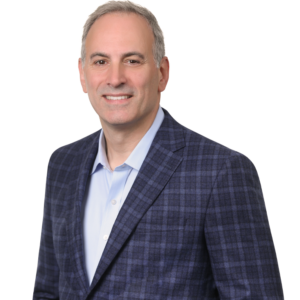The Main Street Lending Program (MSLP) is now accepting applications from borrowers.
The MSLP currently consists of three programs: (i) Main Street New Loan Facility (MSNLF), (ii) Main Street Priority Loan Facility (MSPLF) and (iii) Main Street Expanded Loan Facility (MSELF). There are two proposed programs specifically for Not-For-Profit Organizations: (a) Nonprofit Organization New Loan Facility (NONLF) and (b) Nonprofit Organization Expanded Loan Facility (NOELF).The Federal Reserve’s website includes Term Sheets, frequently asked questions (FAQs), and MSLP forms and agreements. The following information, taken directly from the Federal Reserve’s website, summarizes the three MSLP programs from the borrower’s perspective with the only difference being the maximum amount of the loan .
- Who is Eligible?
- What Constitutes a Business?
- What Businesses are Not Eligible?
- What Constitutes Support Under Subtitle A of Title IV of the CARES Act?
- What is an Eligible Loan and What are the Terms?
- Will the Businesses Financial Health be Evaluated?
- What are the Required Certifications and Covenants?
- What are the Compensation Restrictions Mentioned in 4003(c)(3)(A)(ii)?
- Are there Good Faith Requirements?
- Are there Fees the Borrower Must Pay?
Who is Eligible?
An Eligible Borrower is a Business that:
- Was established prior to March 13, 2020;
- Is not an Ineligible Business; (see below)
- Meets at least one of the following two conditions: (i) has 15,000 employees or fewer, or (ii) had 2019 annual revenues of $5 billion or less;
- Is created or organized in the United States or under the laws of the United States with significant operations in and a majority of its employees based in the United States;
- Only participates in one of the three programs and does not also participate in the Primary Market Corporate Credit Facility; and
- Has not received specific support pursuant to the Coronavirus Economic Stabilization Act of 2020 (Subtitle A of Title IV of the CARES Act).
What Constitutes a Business?
An entity that is:
- Organized for profit as a partnership;
- A limited liability company;
- A corporation;
- An association;
- A trust;
- A cooperative;
- A joint venture with no more than 49 percent participation by foreign business entities; or
- A tribal business concern as defined in 15 U.S.C. § 657a(b)(2)(C), except that “small business concern” in that paragraph should be replaced with “Business” as defined herein.
- Other forms of organization may be considered for inclusion as a Business under the Facility at the discretion of the Federal Reserve.
What Businesses are Not Eligible?
Under 13 CFR 120.110. the following types of businesses are ineligible:
(a)Financial businesses primarily engaged in the business of lending, such as banks, finance companies, and factors (pawn shops, although engaged in lending, may qualify in some circumstances);
(b)Passive businesses owned by developers and landlords that do not actively use or occupy the assets acquired or improved with the loan proceeds (except Eligible Passive Companies under § 120.111);
(c)Life insurancecompanies;
(d)Businesses located in a foreign country (businesses in the U.S. owned by aliens may qualify);
(e)Pyramid sale distribution plans;
(f) Businesses deriving more than one-third of gross annual revenue from legal gambling activities;
(g)Businesses engaged in any illegal activity;
(h)Private clubs and businesses which limit the number of memberships for reasons other than capacity;
(i)Government-owned entities (except for businesses owned or controlled by a Native American tribe);
(j)Loan packagers earning more than one third of their gross annual revenue from packaging SBAloans;
(k)Businesses with an Associatewho is incarcerated, on probation, on parole, or has been indicted for a felony or a crime of moral turpitude;
(l)Businesses in which the Lender or CDC, or any of its Associatesowns an equity interest;
(m)Businesses which:
(1)Present live performances of a prurient sexual nature; or
(2)Derive directly or indirectly more thande minimisgross revenue through the sale of products or services, or the presentation of any depictions or displays, of a prurient sexual nature;
(n)Unless waived by SBAfor good cause, businesses that have previously defaultedon a Federal loan or Federally assisted financing, resulting in the Federal government or any of its agencies or Departments sustaining a loss in any of its programs, and businesses owned or controlled by an applicant or any of its Associateswhich previously owned, operated, or controlled a business which defaultedon a Federal loan (or guaranteed a loan which was defaulted) and caused the Federal government or any of its agencies or Departments to sustain a loss in any of its programs. For purposes of this section, a compromise agreementshall also be considered a loss;
(o)Businesses primarily engaged in political or lobbying activities; and
(p)Speculative businesses (such as oil wildcatting).
contact a member of Withum’s SBA Financial Assistance Services Group.
What Constitutes Support Under Subtitle A of Title IV of the CARES Act?
If your business received support under any of the following sections, it is not eligible to receive a loan under the MSLP.
Sec. 4003. Emergency relief and taxpayer protections.
Sec. 4004. Limitation on certain employee compensation.
Sec. 4005. Continuation of certain air service.
Sec. 4006. Coordination with Secretary of Transportation.
Sec. 4007. Suspension of certain aviation excise taxes.
Sec. 4008. Debt guarantee authority.
Sec. 4009. Temporary Government in the Sunshine Act relief.
Sec. 4010. Temporary hiring flexibility.
Sec. 4011. Temporary lending limit waiver.
Sec. 4012. Temporary relief for community banks.
Sec. 4013. Temporary relief from troubled debt restructurings.
Sec. 4014. Optional temporary relief from current expected credit losses.
Sec. 4015. Non-applicability of restrictions on ESF during national emergency.
Sec. 4016. Temporary credit union provisions.
Sec. 4017. Increasing access to materials necessary for national security and pandemic recovery.
Sec. 4018. Special Inspector General for Pandemic Recovery.
Sec. 4019. Conflicts of interest.
Sec. 4020. Congressional Oversight Commission.
Sec. 4021. Credit protection during COVID–19.
Sec. 4022. Foreclosure moratorium and consumer right to request forbearance.
Sec. 4023. Forbearance of residential mortgage loan payments for multifamily properties with federally backed loans.
Sec. 4024. Temporary moratorium on eviction filings.
Sec. 4025. Protection of collective bargaining agreement.
Sec. 4026. Reports.
Sec. 4027. Direct appropriation.
Sec. 4028. Rule of construction.
Sec. 4029. Termination of authority.
What is an Eligible Loan and What are the Terms?
An Eligible Loan is a secured or unsecured term loan made by an Eligible Lender(s) to an Eligible Borrower that was originated after April 24, 2020, provided that the loan has all of the following features:
- 5 year maturity;
- Principal payments deferred for two years and interest payments deferred for one year (unpaid interest will be capitalized);
- Adjustable rate of LIBOR (1 or 3 month) + 300 basis points;
- Principal amortization of 15% at the end of the third year, 15% at the end of the fourth year, and a balloon payment of 70% at Maturity at the end of the fifth year;
- Minimum loan size of $250,000;
- Maximum loan for:
- MSNLF: maximum loan size that is the lesser of (i) $35 million or (ii) an amount that, when added to the Eligible Borrower’s existing outstanding and undrawn available debt, does not exceed four times the Eligible Borrower’s adjusted 2019 earnings before interest, taxes, depreciation, and amortization (“EBITDA”);
- MSPLF: maximum loan size that is the lesser of (i) $50 million or (ii) an amount that, when added to the Eligible Borrower’s existing outstanding and undrawn available debt, does not exceed six times the Eligible Borrower’s adjusted 2019 earnings before interest, taxes, depreciation, and amortization (“EBITDA”);
- MSELF: maximum loan size that is the lesser of (i) $300 million or (ii) an amount that, when added to the Eligible Borrower’s existing outstanding and undrawn available debt, does not exceed six times the Eligible Borrower’s adjusted 2019 earnings before interest, taxes, depreciation, and amortization (“EBITDA”);
- Is not, at the time of origination or at any time during the term of the Eligible Loan, contractually subordinated in terms of priority to any of the Eligible Borrower’s other loans or debt instruments; and
- Prepayment permitted without penalty.
Will the Businesses Financial Health be Evaluated?
Yes, the lender is expected to conduct an assessment of each potential borrower’s financial condition at the time of the application .
What are the Required Certifications and Covenants?
In addition to other certifications required by applicable statutes and regulations, the following certifications and covenants will be required from Eligible Borrowers:
- Refrain from repaying the principal balance of, or paying any interest on, any debt until the Eligible Loan is repaid in full, unless the debt or interest payment is mandatory and due.
- Will not seek to cancel or reduce any of its committed lines of credit with the Eligible Lender or any other lender.
- Certify that it has a reasonable basis to believe that, as of the date of origination of the Eligible Loan and after giving effect to such loan, it has the ability to meet its financial obligations for at least the next 90 days and does not expect to file for bankruptcy during that time period.
- That it will follow compensation, stock repurchase, and capital distribution restrictions that apply to direct loan programs under section 4003(c)(3)(A)(ii) of the CARES Act, except that an S corporation or other tax pass-through entity that is an Eligible Borrower may make distributions to the extent reasonably required to cover its owners’ tax obligations in respect of the entity’s earnings.
- Certify that it is eligible to participate in the Facility, including in light of the conflicts of interest prohibition in section 4019(b) of the CARES Act.
What are the Compensation Restrictions Mentioned in 4003(c)(3)(A)(ii)?
The following govern the total compensation restrictions beginning on the date the loan is executed and ending one year after the date on which the loan or loan guarantee is no longer outstanding:
- Until 12 months after the loan is no longer outstanding
- Agree not to repurchase an equity security listed on a national securities exchange of the entity or any parent company of the entity, except to the extent required under a contractual obligation that is in effect as of the date of the enactment.
- Agree not to pay dividends or make other capital distributions with respect to the common stock of the entity
- During and 1 year after the loan is no longer outstanding:
- No officer or employee whose total compensation exceeds $425,000 in 2019 (other than an employee whose compensation is determined through a collective bargaining agreement entered into prior to March 1, 2020)
- Will receive total compensation that exceeds during any 12 consecutive months of such period, the total compensation received during 2019
- Will receive severance pay or other benefits upon termination which exceeds twice the maximum total compensation received by the officer or employee in 2019
- No officer or employee whose compensation exceeded $3,000,000 in 2019 may receive during any 12 consecutive months compensation that exceeds $3,000,000 AND
- 50% of the excess over $3,000,000 of the total compensation received by the officer or employee in calendar 2019
- No officer or employee whose total compensation exceeds $425,000 in 2019 (other than an employee whose compensation is determined through a collective bargaining agreement entered into prior to March 1, 2020)
- Total compensation includes salary, bonuses, awards of stock, and other financial benefits.
Are there Good Faith Requirements?
Yes, the borrower should make commercially reasonable efforts to maintain its payroll and retain its employees during the time the loan is outstanding .
Return to Top
Are there Fees the Borrower Must Pay?
Yes, the borrower will pay the lender an origination fee of up to 100 basis points of the principal borrowed.
Return to Top
SBA Financial Assistance Services





